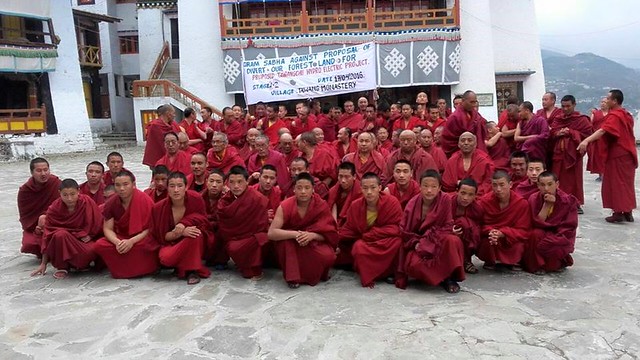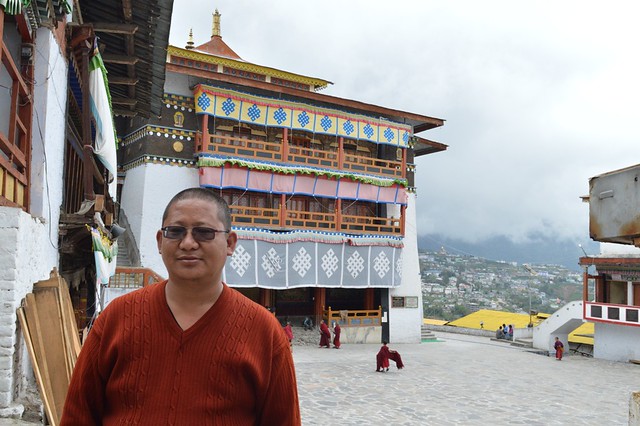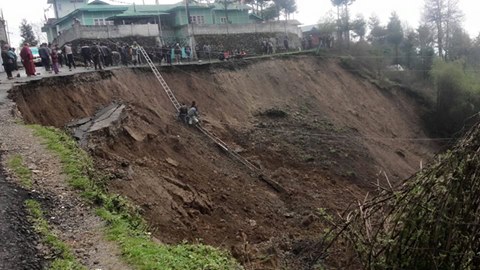In the first of the three-part series, we look at why the citizens of Tawang, backed by a number of Lamas from the local monastery, are protesting against Mega Dams that threaten the livelihoods of the Monpa community along with potentially catastrophic ecological impact. Part Two will talk about the shooting on May 2 that killed two and injured many others, while Part Three will talk about what is at stake for the government and how they plan to fight the anti-dam sentiments.
By Amit Kumar, Twocircles.net
Tawang: Every year, the month of May sees hundreds of tourists visit Tawang on a daily basis. But this year, for the first 15 days of the month, the smallest district of Arunachal Pradesh in terms of size and the eighth-least populated district in the country remained closed, concerned and on the edge. Although situated close to the China border, the district has been one of the most peaceful areas in the state and terms such as curfew, section 144 or had been unheard until May 2, when two people were shot at and several injured for protesting against 13 mega dam projects that have left the residents worried about their possible impact.

The issue of mega dams in the state has been a sore point for the governments, both state and central, who wish to propel hydropower projects in the state known for its rich water resources. Over the past ten years, close to 150 MoUs (Memorandum of Understandings) have been signed for hydel projects with companies like NHPC, Bhilwara, Reliance and Jindal Power, etc and according to the plan, the dams in total will produce close to 42,000 MWs. The ecological impact will be sizeable, if not catastrophic, and residents across the state have voiced their concerns against such projects: Tawang is no exception.
It is important to point out that the local people are not against tapping the waters for hydropower projects: 28 micro and mini hydel projects exist in the district, ranging from as small as 80 KW project (Chellengkang Hydel station) to Mukto Shaikangchu (6 MW) while four are upcoming. Given that conventional sources of electricity (thermal) are not possible in a town situated at over 10,000 feet, the locals have supported small hydel projects to provide them with electricity needs. It is the mega projects that threaten submerging vast areas, cutting thousands of trees and greatly impacting the ecological balance in the area that they are protesting against. Another reason why the idea of mega dams has been criticised by experts is because the state of all districts of the state of Arunachal Pradesh lie in Zone V of the seismic zone. No wonder then, that the sixth-largest earthquake in the history of the world occurred in Arunachal Pradesh on August 15 1950.
This explains why a local NGO, Save Mon Region Federation, has been at the centre of the protests, with its general secretary, Lama Lobsang Gyatso’s arrest leading to violent protests which lead to the killing of two people.
Gyatso, a man is his late 30s, is a soft-spoken man and well-known in the town for his activism, so much so that he is referred to as the ‘Anna Lama’ in the town by people who know him well. As part of the ‘Save Mon Committee’ started in 2011 and later called the ‘Save Mon Region Federation’, he has been spearheading the anti-dam protests. The organisation had been protesting against the construction of 780 MW Nyamjang Chhu power project in the Tawang valley. The project is a threat to the wintering habitat of the Black-necked crane, an endangered bird considered sacred by the Buddhist Monpa community. The bird is considered an embodiment of the 6th Dalai Lama who was from Tawang and wrote about the bird in his poetry. Gyatso told Twocircles.net, “Since 2013, we had been writing several letters to the government to cancel this project, but to no avail. So, we approached the National Green Tribunal which suspended the environment clearance of the project on the April 7, 2016 and this decision angered both the local as well the state government and I have been portrayed as a villain by the state officials.”

Abbot controversy an attempt to divert dam protests?
Initially, it was for another, much smaller dam project–which the SMRF supported–that Gyatso got into trouble. The Mukto Shaikangchu project, a mini-hydel project (6 MW) developed by the state government’s Department of Hydro Power Development (DHPD), took three years more than its scheduled date (September 2012) to be completed and within three and half months, it developed a fault due to alleged low-quality construction. On April 25, he was going to file a PIL in this regard when he was arrested, before being given bail on the same day. However, on April 28, he was arrested for ‘insulting’ the Abbot of Tawang Monastery and calling him an outsider who shouldn’t meddle in local affairs. The same day, the Zila Parishad Chairman called a public meeting to discuss development of Tawang Region but singled out and attacked Gyatso. The reported statement from Gyatso was from a 2012 clip where he said that the Abbot was from Bhutan and should not meddle in local affairs. However, speaking to Twocircles.net, Gyatso said, “The issue was a manufactured one; I had merely said that there is no rule which says that Lamas cannot be involved in social issues, whether they are from outside or not…how can I call him an outsider when even I spent 15 years of my life in the Bylacuppe monastery in Karnataka?. The issue was made up to divert the attention from the dam protests that had been gaining momentum,” he said.
In fact, he added that apart from the NGT orders, even local villages had passed resolutions against mega dams. The residents of village Kundeling had voluntarily passed a resolution against mega hydel power projects in Tawang district at the Gram sabha level meet, he added.
The demand to focus on ecology also becomes more important given the damage the area has already suffered. Tawang is now a sitting duck in front of rains and landslides; in April, it took only five days of rains to kill 18 people in landslides and flooding and the state had received Rs 66 crore as disaster relief.

Due to the expansion of the towns, and roads, the area is now in great danger of recurring landslides. Then, there is the issue of available land. The Army, Seema Suraksha Bal and the district administration control almost 75% of the area in the district, according to the SMRF. “The only fallow land that is left now is near the river beds…just two projects, Tawang 1 and Tawang 2, require over 300 hectares of land. What will be left for the locals? There are 32 small dams in the area already, and they want to make 13 more? Tawang requires 6.5 MW during the peak demand in winters, and despite all those small dams we have power cuts for 20 hours on certain days,” says Tashi Norbu, president, SMRF. “But instead of fixing these problems, they want to construct projects worth 3,000 MWs? The locals will be devastated even though the electricity produced will be of no use to them. Why shouldn’t we protest then,” he adds. It is a sentiment that has rattled the local administration, but for the Lamas of Tawang, the fight is likely to continue for a long time.
